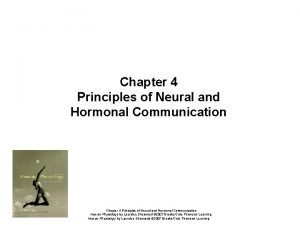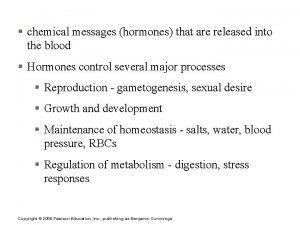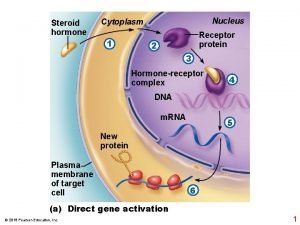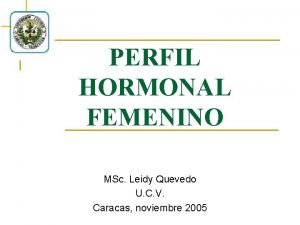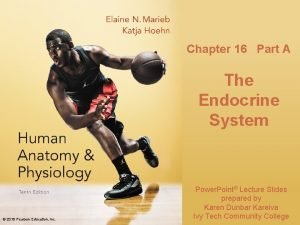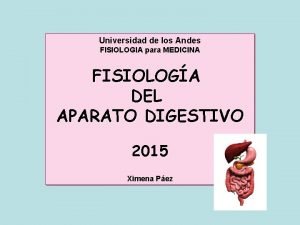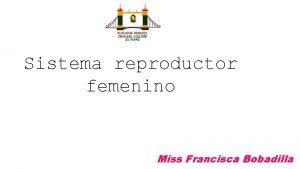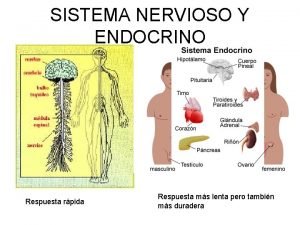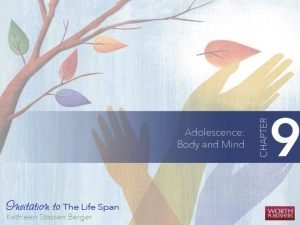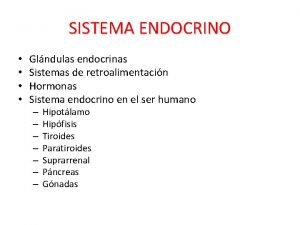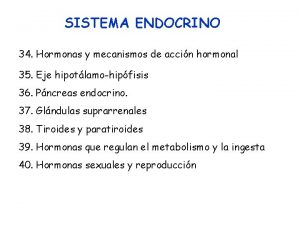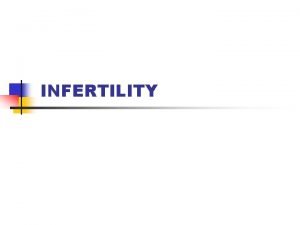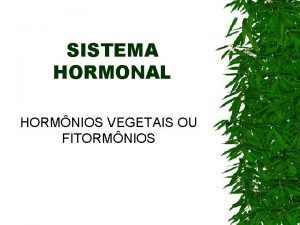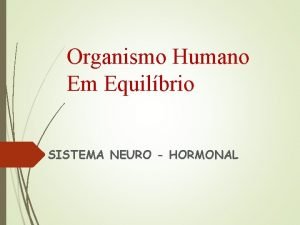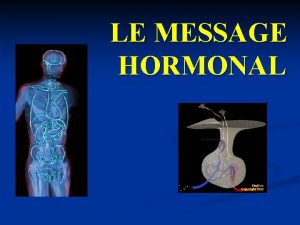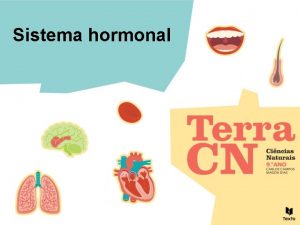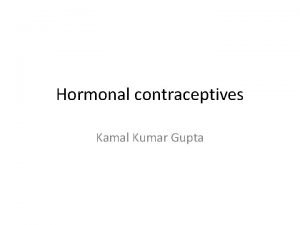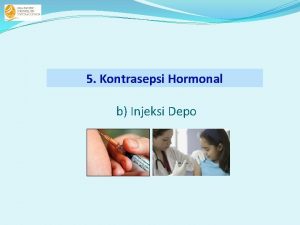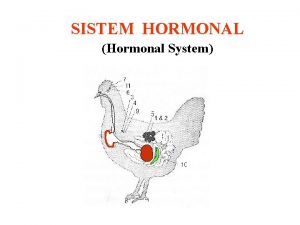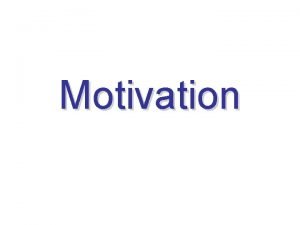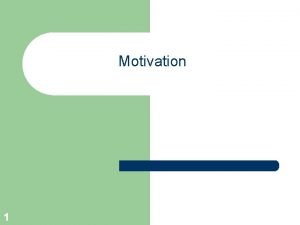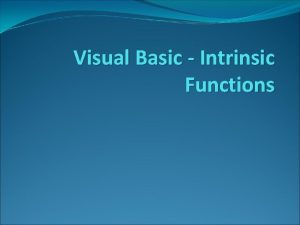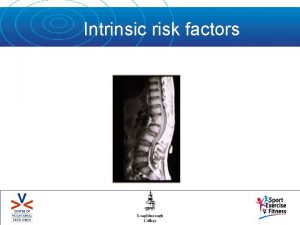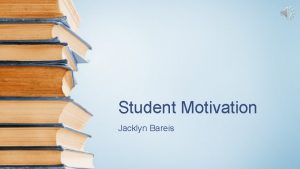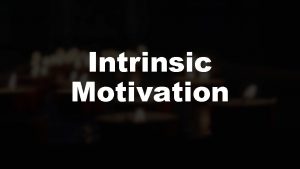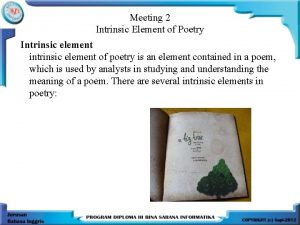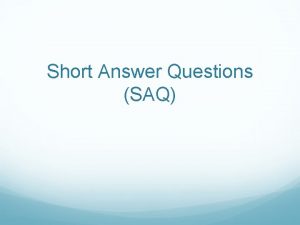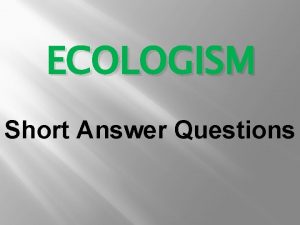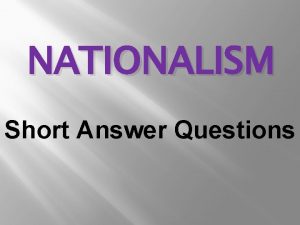Answer these questions 1 Intrinsic and hormonal systems

















- Slides: 17

Answer these questions… 1. Intrinsic and hormonal systems influence the heart during physical activity. A swimmer completes a 1500 m race, with sub-maximal effort, in 20 minutes. Describe the variations in heart rate and how these changes are achieved during the race. [4 marks]

• How do neural factors regulate heart rate during physical activity and during gradual recovery? [5 marks]

Answer to Q 1. • Heart rate rapidly increases • Proprioceptors detect movement. • Production of CO 2/increased blood acidity/ph falls/increase in H+ ions • Stimulates chemoreceptor (in aorta/carotid body) • Stimulates medulla in brain • sympathetic nerve is stimulated/release of adrenaline/noradrenalin/norepinephrine • Sino atrial node stimulated

Answers to Q 2 During activity • Chemoreceptors detect decreases in O 2/ p. H of the blood/increases acidity /CO 2/Lactic acid • Proprioreceptors detect movement • Baroreceptors detect increases in blood pressure • Messages are sent to the cardiac control centre/ CCC (in the medulla oblongata) • S/A node stimulated / the (cardiac) accelerator nerve SA node reference only when linked to physical activity(not recovery) • The sympathetic nervous system increases heart rate During recovery • Chemoreceptors detect increases in the O 2/ p. H of the blood/ decreases in acidity /co 2/Lactic acid • Proprioreceptors detect reduction in movement • Baroreceptors detect decreases in blood pressure • Messages are sent (to the S/A node) via the vagus nerve • The parasympathetic nervous system decreases heart rate.

Definitions of the Heart DEFINITION STROKE VOLUME AMOUNT OF BLOOD EJECTED IN ONE (SV) BEAT HEART RATE (HR) RESTING VALUE 70 -80 ML NUMBER OF BEATS IN 1 MIN 70 -90 bpm CARDIAC OUTPUT STROKE VOLUME x HEART RATE Q = SV x HR APPROX 5. 6 LITRES * Values relate to an untrained person

Values During Exercise Stroke Volume At Rest During Exercise 70 -80 ml 140 -190 ml Heart Rate 70 -90 bpm 120 -200 bpm Cardiac Output 5. 6 L/min 19. 81 L/min

Blood Pressure • http: //www. youtube. com/watch? v=T 9 QKj 89 a jko


During exercise, blood pressure increases

Venous Return • You are going to watch a video clip. When watching the clip, write down the 3 mechanisms that assist venous return. • http: //www. youtube. com/watch? v=e. Cs. F 4 eyx xy. A

Vascular Shunt • The redistribution of blood during exercise. • During exercise, we need more blood to be delivered to the working muscles. • Therefore, we need to reduce the amount of blood going to places that do not need it so we can send more to the places that do. • E. g. blood is not needed in the digestive system during exercise, so blood is restricted to this area.

Vascular Shunt • In order to make this happen, 2 things occur: 1. Vasoconstriction 2. Vasodilation • Vasoconstriction is where the arterioles and precapillary sphincters supplying the organs with blood get smaller to allow less blood through. • Vasodilation is where the arterioles and precapillary sphincters supplying the muscles with blood get bigger to allow more blood through.

Vascular Shunt • Controlled by the VCC (vasomotor control centre) • Chemoreceptors and baroreceptors inform the VCC. • Increases sympathetic nerve stimulation to organs • This activates vasoconstriction. • Decreases sympathetic nerve stimulation to the muscles. • This activates vasodilation

Quick recap • http: //www. teachpe. com/anatomy/blood_flo w. php

Answer this question… • Sketch a graph to show a typical heart rate response of a healthy 18 year old to a submaximal 10 minute warm-up training run with a 5 minute recovery period. [5 marks]


In pairs… • Describe to your partner the flow of blood through the systemic circulatory system • Tell your partner how blood flows through the vascular system and what changes in pressure occur as this happens.
 Humoral neural and hormonal stimuli
Humoral neural and hormonal stimuli Neural and hormonal communication
Neural and hormonal communication Hormonal stimulus
Hormonal stimulus Hormonal stimulus
Hormonal stimulus Hirsutismo
Hirsutismo Hipotálam
Hipotálam What are the tropic hormones
What are the tropic hormones Tronco celiaco
Tronco celiaco Introduccion aparato reproductor masculino
Introduccion aparato reproductor masculino Imágenes de la epilepsia
Imágenes de la epilepsia When is a period considered late
When is a period considered late Hormonal
Hormonal Mecanismos de secreción hormonal
Mecanismos de secreción hormonal Menses
Menses Plantas que interagem com sistema hormonal
Plantas que interagem com sistema hormonal Sistema neuro hormonal
Sistema neuro hormonal Regulação hormonal do sistema reprodutor masculino
Regulação hormonal do sistema reprodutor masculino Hypothalamus
Hypothalamus

